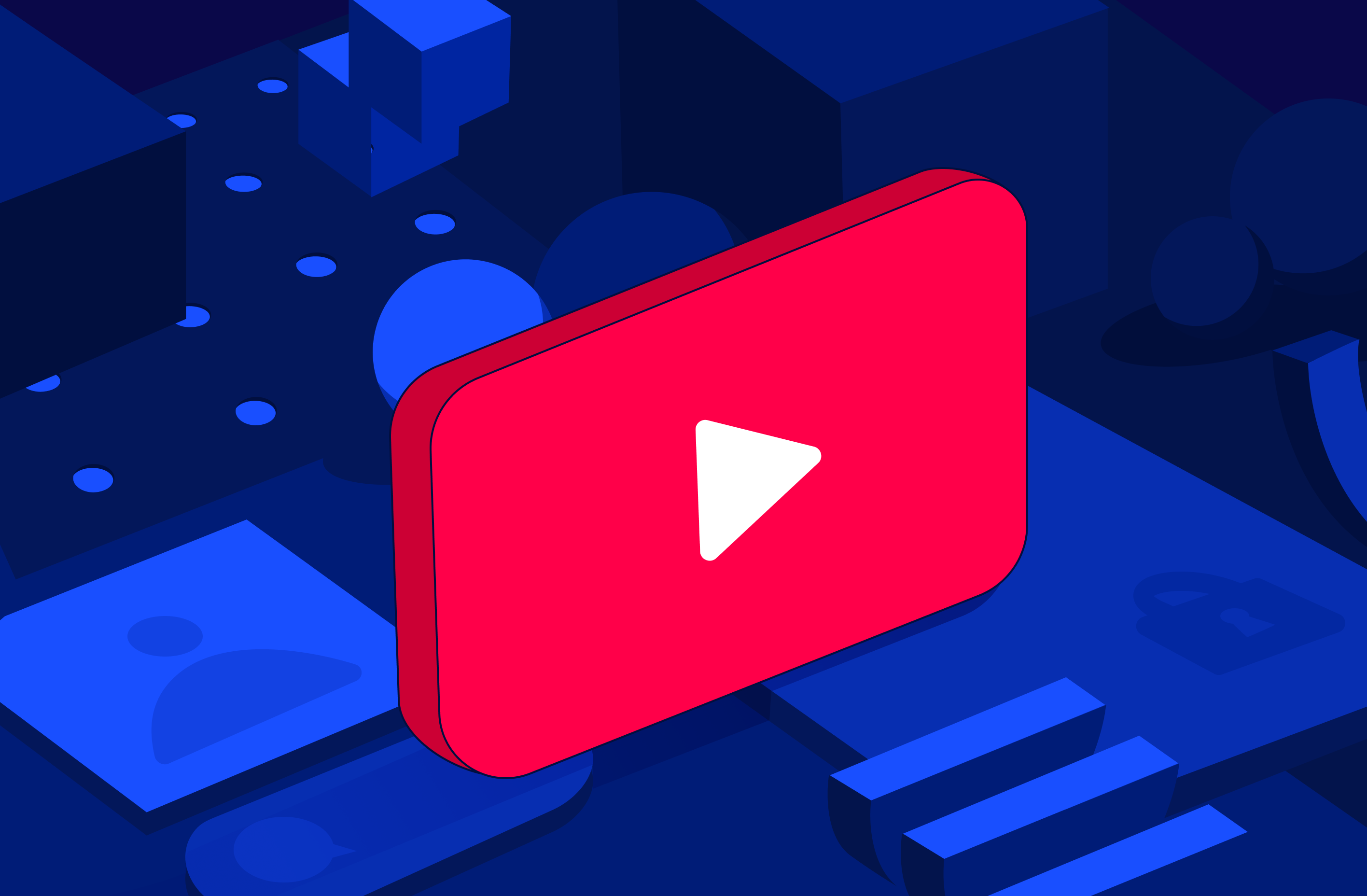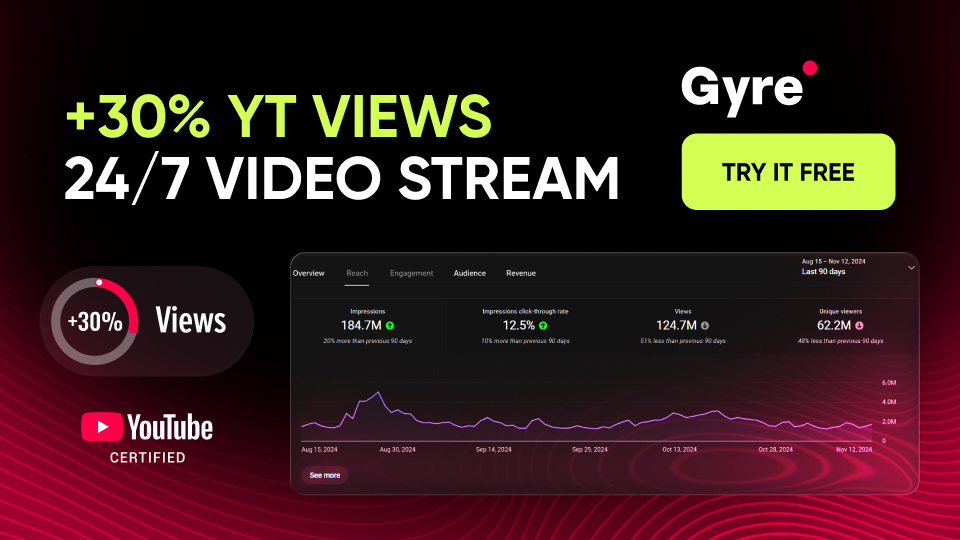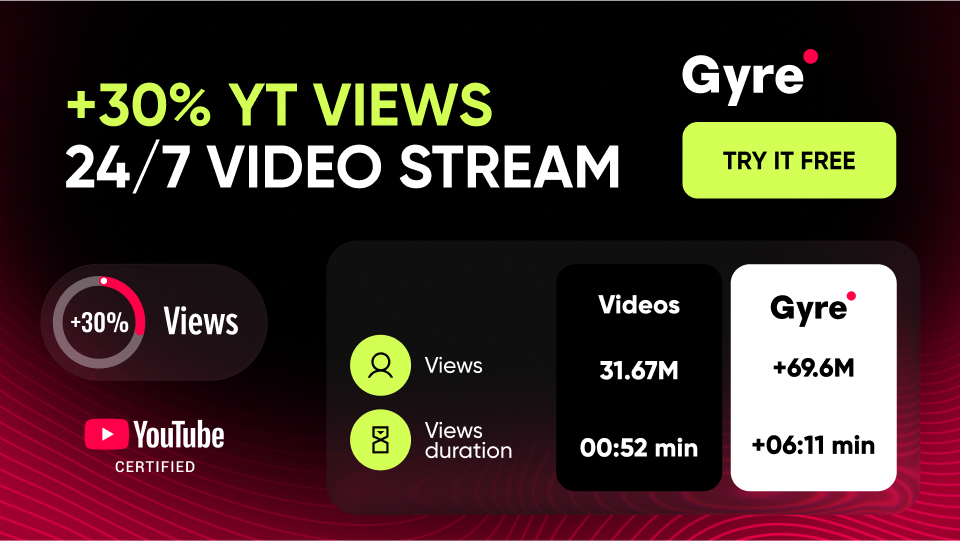What Is the YouTube Algorithm?
Let’s find out how YouTube works. In a nutshell, the YouTube algorithm is a set of algorithms that, taken together, are designed to ensure that in the feed, search, recommendations, and on the home page, each user sees content most relevant to their preferences and interests. In practice, these algorithms analyze various signals that have changed from update to update since 2005 (the year YouTube was founded). Let's look at the key updates to the YouTube algorithm over time:
- 2008 – everything depends on the number of views (obviously, this stimulated the creation of large volumes of low-quality clickbait content: in particular, titles and previews did not correspond to the content itself);
- 2012 – emphasis on watch time (this "forced" content creators to create more engaging and interesting videos for their audiences that would hold their attention for as long as possible);
- 2016 – focus on the number of YouTube impressions (the more likes, comments, and subscriptions a specific content creator and/or video received, the more actively they were promoted by the platform among viewers who had not yet seen them);
- 2019 – combating disinformation (due to frequent violations of internal policies, this YouTube algorithm change introduced some measures to counter fake information, as well as information related to violence, illegal substances, etc.; after such videos are detected, they are removed from the platform, and the creators loss monetization);
- 2023–2024 – personalization (thanks to AI capabilities, the last YouTube algorithm update can adapt selections of fresh content according to the individual preferences of a specific user, based on their viewing history, behavioral patterns, etc.).
How the YouTube Algorithm Works in 2025
After we figured out how the YouTube algorithm works in the context of the latest most significant updates, we can identify the main factors that have the most significant impact on it:
- Click-through rate;
- The YouTube watch time;
- The number of videos a specific user watched on your channel;
- How recently a particular user has viewed related videos;
- The most recent search and viewing history of a specific user;
- The demographic and geographic characteristics of a particular user.
Now, let’s take a closer look at the core YouTube algorithms.
Youtube Recommendation Algorithm
Let's start with the principles of the current YouTube recommendation algorithm. In particular, it is based on:
- Data on the user's previous interactions with the platform;
- Involvement of other users in similar content;
- Personalization is due to the presence of AI that analyzes the behavior patterns of a specific user.
We also note that this algorithm allows the YouTube platform to “filter out” videos (or even channels) that the user has marked as "Not interested" and promote (give top positions in recommended videos) content from channels to which the user has recently subscribed.
YouTube Home Page Algorithm
Now, let's check how the user's home page is formed and how the algorithm mentioned above works here. In particular, the home page includes YouTube channel recommendations based on:
- Popular topics;
- Subscriptions;
- Viewing history.
From this, we can conclude that videos with high audience engagement have a better chance of getting to the top of the feed.
YouTube Suggested Videos Algorithm
Let's find out how the YouTube suggested videos algorithm works (i.e., generating recommendations for viewing the following videos).
Their list is influenced by:
- Similarity to the current video;
- Time spent watching the current video and other videos on a similar topic;
- Content that was liked by other viewers who watched the current video.
YouTube Trending Videos Algorithm
Now, it's time to determine the principles by which the YouTube algorithm works to demonstrate specific content in trends. In particular, in this section, the algorithm highlights:
- Videos that have recently received a sharp influx of views over a short period;
- Videos that are popular in the region where a specific user is located;
- Videos with high audience engagement in a short period.
As for the YouTube Shorts algorithm (now, YouTube Shorts, due to their short format and often trending topics, gain views very quickly), it is identical to the one that works for full-length YouTube videos. Along with that, this algorithm connects the success of a video in Shorts to the overall content of the channel, which can ultimately increase views of other videos on that channel.
YouTube Search Algorithm
To fully understand the principles of the YouTube algorithm for views, we only need to analyze the principles of its search, namely, the scenario according to which the ranking algorithm works in the YouTube search results. In particular, ranking in the search is determined by:
- The accuracy of keywords in the title, description, and YouTube tags;
- The authority of the source;
- The level of audience engagement (likes, comments, etc.).
7 Tips to Increase Reach on YouTube
Now, we would like to present you with several recommendations for boosting visibility on YouTube and affecting the ranking of your content according to the YouTube algorithm.
Use keywords in your videos’ titles and descriptions
Keywords for the YouTube algorithm are essential as they help it better understand the essence of your video and, therefore, recommend it to a relevant audience. To understand which keywords best suit your video, you can analyze popular queries using Google Trends, Ahrefs, or YouTube search. It is also worth noting that this algorithm analyzes the description and tags, so including keywords in them will be no less critical in effectively promoting your content.
Try to keep viewers' attention in your videos from the first seconds
According to statistics, viewers determine whether a specific video interests them in the first 15 seconds. Thus, if many users stop your video after this period, it will be considered less valuable by the algorithm and not included in the recommendations. To avoid this, try to intrigue your audience by offering them a shocking fact or promising to solve their problem. You can get some inspiration from the most popular videos on YouTube.
Call on viewers to take action
As we have already said, audience engagement plays a key role in YouTube ranking, so you must get as many likes, comments, and subscriptions as possible. To do this, as simple as this recommendation is, do not forget to add appropriate calls to action at the beginning and end of each video.
Come up with attractive thumbnails
You can use an attractive preview to interest your viewers before they open your videos. To do this, try to use contrasting colors, large text, and “talking” images. At the same time, you should be careful that YouTube does not consider your preview clickbait and exclude it from recommendations due to inconsistency with its content.
Do not forget to add subtitles
Subtitles (especially in multiple languages) can help you maximize your reach by making your videos fully accessible for those who prefer to watch content without sound or who have difficulty understanding speech. YouTube now offers automatic subtitles that you can edit manually if needed.
Focus on consistency
Regularity of publications was important 10 years ago, and, to this day, YouTube has not changed its principles. In particular, this helps to retain subscribers, which means that if you set a schedule so that viewers know when to expect new content, this will help you immediately attract as many views and reactions to new videos as possible.
Interact with the audience through comments
Finally, the YouTube algorithm considers user activity in the comments section – the more comments there are, the more valuable your video is, according to YouTube. You can encourage your audience to comment directly in the video itself (we wrote about this earlier) and respond to comments already there.
YouTube Algorithm Myths
In this section, we'll help you figure out what aspects of your videos might be considered ranking factors but, in reality, have no impact on them.
YouTube algorithm favors short videos
YouTube Shorts has more algorithm-friendly content and a better chance of ranking high since it is easier for viewers to watch such videos. At the same time, it is worth remembering that the algorithm primarily focuses on viewer retention and engagement. Thus, any video can be successful if viewers watch it as a whole or most of it.
Correctly composed tags significantly increase the chances of your video for high-ranking
Tags play only a supporting role, correcting possible errors in the YouTube ranking algorithm when it recognizes the topic of your content. This aspect is described in detail here. The Google team states that they can be helpful in cases where the title or description is incorrect.
Videos with the most likes are ranked better
Indeed, likes are an indicator of engagement, but, at the same time, YouTube does not perceive them as a determining factor. According to the latest updates, the engagement metrics are much more critical today: comments, subscriptions after viewing, and total viewing time. Moreover, the algorithm also considers adverse reactions such as dislikes and unsubscribes, so it makes sense to monitor the balance here.
The YouTube algorithm “does not like” external links
Many content creators of popular YouTube videos falsely believe that adding links to external resources leads to a decrease in ranking. This can only be true in cases where they are not relevant to the topic of your content and are thus perceived as spam.
The Final Thoughts
Now, you know how the YouTube algorithm works and can make an informed decision on how to build your content strategy. If you would like to get even more valuable information for content creators on leading social media platforms (for example, about how to optimize your YouTube channel or the latest Instagram updates), feel free to check other articles on our blog.







